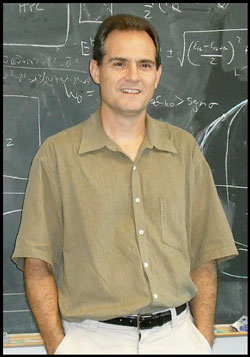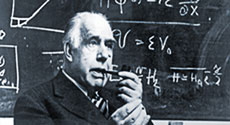Niels Bohr Lecture by Peter Hirschfeld
Led by the nodes: forging an understanding of Fe-based superconductors
The origin of superconductivity in most new materials discovered in the past two decades remains a mystery, and represents one of the main unsolved questions of condensed matter physics.

Peter Hirschfeld, University of Florida
The new Fe-based superconductors have occasioned considerable excitement because transition temperatures are high, and it is hoped that the existence of a second class of such superconductors, in addition to cuprates, will lead to new insights into the essential ingredients for high temperature superconductivity.
I will review what is known about the superconducting state and explain the basis for the near-consensus that almost all pnictide materials display spin singlet, s-wave symmetry. Different experimental probes on different materials show a large diversity of superconducting gap structures, with evidence for both gap nodes and fully gapped behavior. Within the context of a spin fluctuation pairing theory of such systems, this variety of gap structures, unexpectedly based on intuition from the high-Tc cuprates, is easy to understand.
High-Tc superconductivity in these unusual multiband materials poses anew, and offers new insight into, the question of how higher temperature superconductivity might be achieved.
About the speaker:
Peter Hirschfeld received his Ph.D. from Princeton University in 1985 and did postdoctoral research at the Technical University of Munich and Stanford University until 1988, when he joined the faculty at the University of Florida, where he is currently Professor of Physics. His research interests involve problems of strong electronic correlations and superconductivity, often including a focus on disorder.
|

 Niels Bohr Lectures
Niels Bohr Lectures